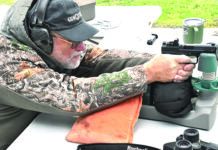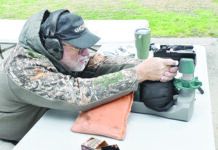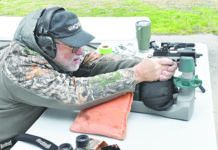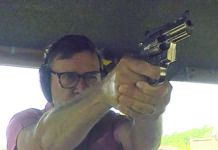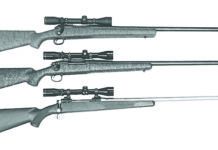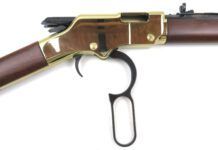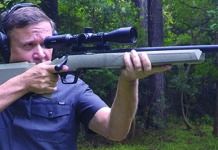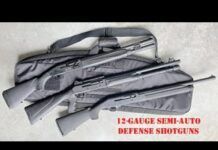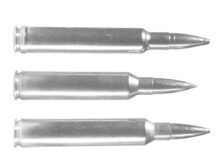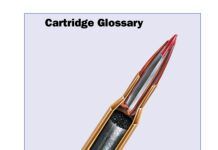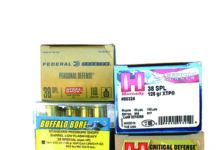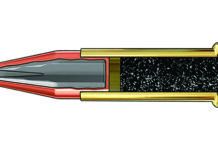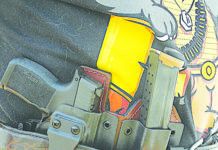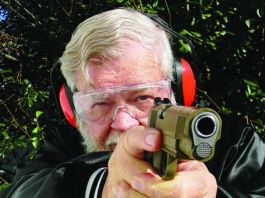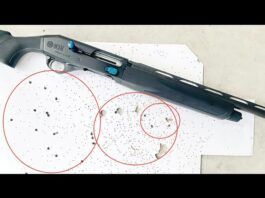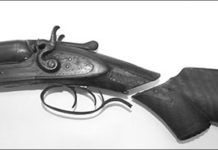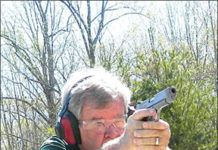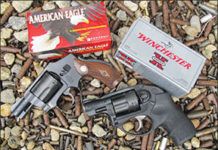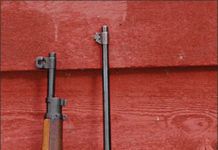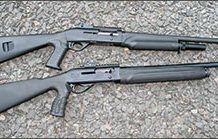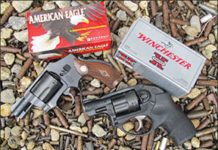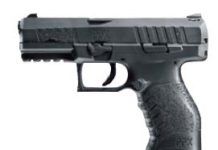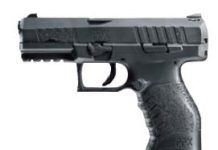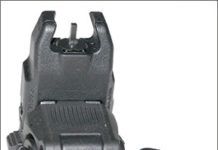308 Win. Bolt-Action Rifles: Should You Buy New or Used?
Two Big 45 ACP Pistols: Glock 21 Versus Rugers SR45
308 Win. Bolt-Action Rifles: Should You Buy New or Used?
Extreme Gun Stock Repair
How many old stocks have you seen that were broken at the wrist, repaired and then broken again? If you have been around guns for very long I'm sure you have seen your share. Based on the number of badly repaired old stocks that I have worked on, most folks think all it takes is some glue and perhaps a few screws and a splint or two. When the gun breaks in the same place a time or two they give up the job and put stock repair into the black arts file.
Testing Three Short 1911s from Kimber, Ruger, and SIG Sauer
Hammerless Snubnoses: Ruger LCR vs. Smith & Wesson M42
Vintage Rifle Test: Ross MKII Versus Remington Pattern 14
The turn of the 19th to 20th Century saw lots of innovation in the world of firearms. Forty years earlier, the Civil War had been fought largely with muzzle loaders. By the turn of the century metallic cartridges had taken a firm hold, and many were the ways to use them, especially to fight wars. We take a look here at two rifles that had their roots just before the first World War. One is the Canadian Ross 1905 Mark II (about $400), and the other is a Remington-made 303 Pattern 14 rifle, also known as the Rifle No. 3 Mark 1* (about $500), which became our "1917 Enfield" when made up as a 30-06. The Ross and Pattern 14 both take the rimmed 303 British cartridge.
Just prior to WWI, Charles Ross designed what was a rather lightweight and somewhat flimsy rifle, and through his connections to people in government power, managed to get a military contract to build a bunch of them. These were found to be lacking in strength, though quite accurate. A second version of the rifle was forthcoming, the Mark II Ross rifle. Though they were also not ideal for military use, they saw lots of service, were used in Canada and in the U.S. for training, and a goodly number survived. These were often cut down to form "sporters" of a somewhat dubious nature, though some were done up very well by various gunsmiths and by the Ross factory.
One of the lesser-quality Ross sporters made its way to our test facility here in Idaho, along with a stout example of the Pattern 14 rifle. We tested both rifles with Remington 174-grain solids, Serbian PPU 150-grain SN, and with mil-spec ball, head stamped HXP with a date of 85, and labeled L1A1. This had a bullet weight of 175 grains. We gave both rifles a good, hard look, and this is what we found.
Semi-Auto Tactical Shotguns: Benelli, EAA Go Head to Head
Hammerless Snubnoses: Ruger LCR vs. Smith & Wesson M42
Shopping for a Polymer 9mm: We Test CZ, Sphinx, & Walther
Shopping for a Polymer 9mm: We Test CZ, Sphinx, & Walther
Outfitting Your Rifle: We Try Triggers, Stocks, and Magazines
In the September 2013 issue we tested three of the AR-15 rifle types, and found some limitations among them. For example, we replaced the horrid trigger in the Bushmaster Carbon-15 with one of the excellent Geissele (pronounced GUYS-lee) SSA-E triggers. That trigger was such a revelation we immediately wanted to replace the triggers in the other two with the aftermarket ones on hand, but waited until now to try them.
We had on hand a Timney 668-S trigger that was supposed to give a 3-pound break. We had another Geissele trigger, the Hi-Speed National Match, to try. Besides triggers, we had two different types of butt stocks by Magpul. These were the easily-changed MOE, a mil-spec item that gives you several benefits; and the UBR stock, which requires some gunsmithing to install because you have to replace the original stock extension with Magpul's.
We also had other items from Magpul that we were glad to see. These were an add-on set of "iron" sights that were designed to clamp onto Picatinny rails. We had a front and rear, the so-called MBUS set, but none of our rifles had a forward rail, so we could not try the front sight. Two of the rifles had forward sights, and we were thus able to test the aperture rear sight on them.
We had a final item, which some shooters seem to like a whole lot. That's the costly Slide Fire mechanism, which permits rapid-fire shooting of any of the AR-type rifles. With all these parts in front of us, we got busy with the original three AR-15s, which were the Rock River Arms LAR-15, the ArmaLite M15, and the Bushmaster Carbon-15. Rather than try all the parts on all the rifles, we put them where they seemed most appropriate, or as in the case of one of the stocks, the only place they'd fit. Here's what we found.


